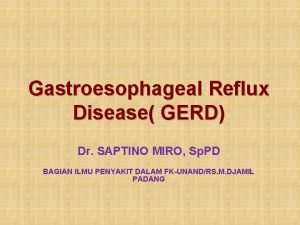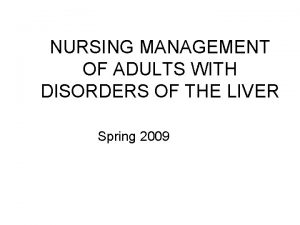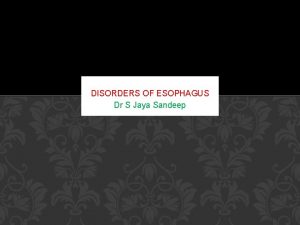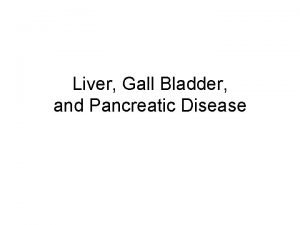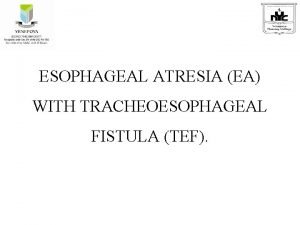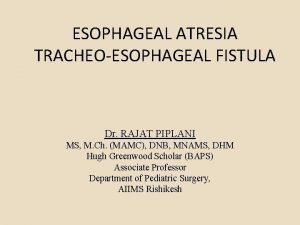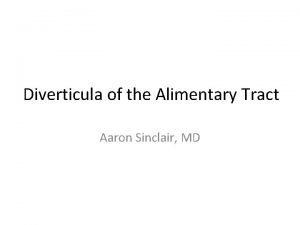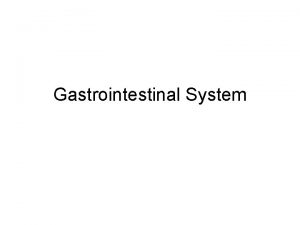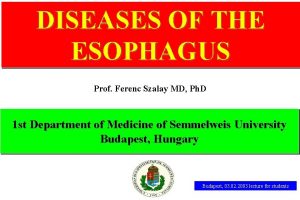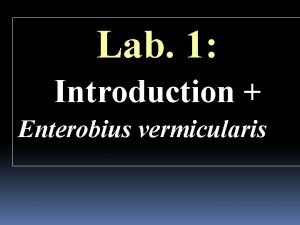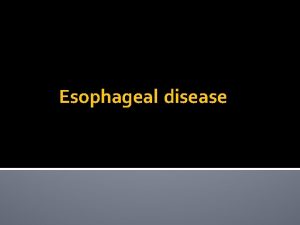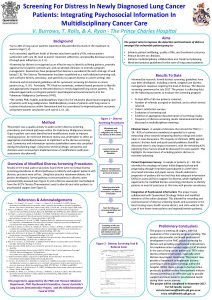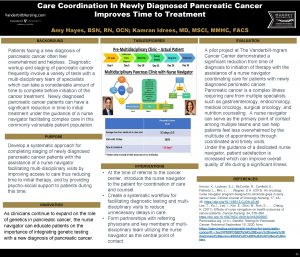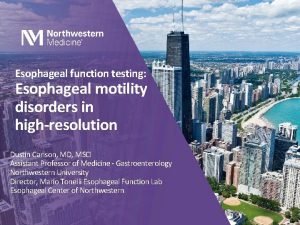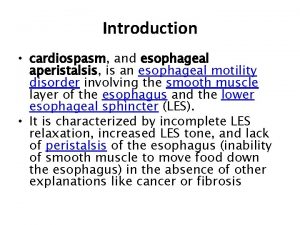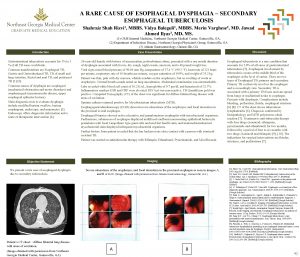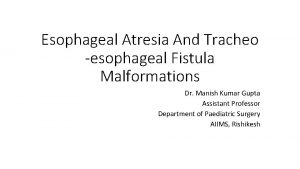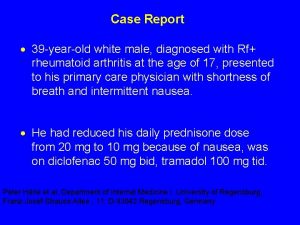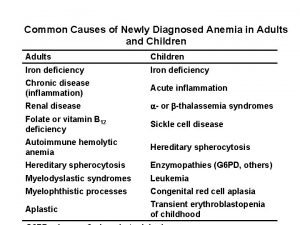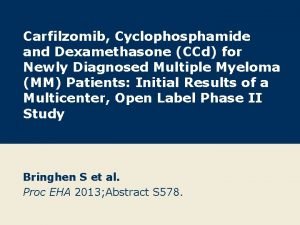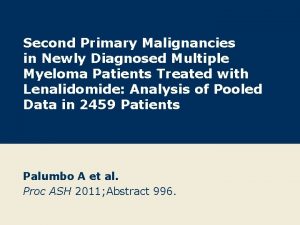54 yearold woman with newly diagnosed esophageal cancer





















- Slides: 21

54 -year-old woman with newly diagnosed esophageal cancer Associate Professor, Dr. Umut Kefeli, Kocaeli University School of Medicine Department of Medical Oncology 8 th International Gastrointestinal Cancer Conference 07. 12. 2018

Case Presentation q 54 -year-old q♀ q 2 children q ECOG PS 0 q Hypothyroidism q No history of smoking, alcohol q. Dysphagia

• Upper GIS endoscopy: Thoracal esophageal stricture at nearly 35 cm from the incisors. • Thorax CT: 40 mm long irregular wall thickening at distal thoracic esophagus, nearly totally obliterating the lumen which suggests an esophageal mass.

• Thorax CT: - Mass lesion causes indentations of the right pulmonary artery and the posterior contour of the left atrium. - No clear fat plane between descending aorta and the mass lesion. - Prevascular, paratracheal and right paraesophageal, 14 x 7 mm. lymphadenopathies. - Right lung parenchymal, up to 4. 5 mm three pulmonary nodules and 2 mm subpleural nodule at left lower lobe.

• PET/CT: - 37 mm long, infracarinal esophageal wall thickening (SUVmax: 32) - Right upper paratracheal, bilateral lower paratracheal, left prevascular, precarinal, subcarinal and bilateral hilar minimally increased hypermetabolic lymphadenopathies (SUVmax: 4. 9). - No FDG involvement in the pulmonary parenchyma and abdominopelvic lymph nodes.

q. Histological examination of the endoscopic biopsy specimen demonstrated moderately-differentiated squamous cell carcinoma. q. T 4(? ), N(+), M(-), clinical stage IVA esophageal cancer was diagnosed.

q WHAT WOULD BE YOUR SUGGESTION? A) Neoadjuvant chemotherapy B) Definitive chemoradiation C) Preoperative chemoradiation D) Surgery

• Treated with definitive chemoradiation : 5 -Fluoruracil and Cisplatin and RT to 50. 4 Gy. • Patient is re-evaluated with PET/CT. • PET/CT reported a nearly total improvement in esophageal wall thickening with a total metabolic response and minimally increased FDG uptake in all mediastinal stations suggesting reactive disease. • Thorax CT reported a wall thickening of 8 mm in its thickest place with reversal of esophageal dilatation and multiple mediastinal lymph nodes up to 10 mm diameter.

q WHAT WOULD BE YOUR SUGGESTION? A) Surveillance B) Surgery C) Palliative management D) Chemotherapy

• Total esophagectomy + left thoracotomy + witzell jejunostomy (16. 11. 2017): I. Total esophagectomy + subtotal gastrectomy material - Connective tissue development, frequent coagulation necrosis areas - 1 lymph node: carcinoma metastasis - 9 lymph nodes: reactive hyperplasia II. Subcarinal lymph node: anthracosis, granulomas III. İnferior ligament biopsy: histiocytosis, anthracosis, granulomas No tumors seen at surgical borders.

There were no residual disease in the postoperative CTs.

• Capecitabine and oxaliplatin - Capecitabine 1000 mg/m 2 PO BID on Days 1– 14 - Oxaliplatin 130 mg/m 2 IV on Day 1 - Cycled every 21 days • After 6 cycles of adjuvant chemotherapy, patient is re-evaluated with a PET/CT which showed no FDG uptake ( 04. 05. 2018 ) • There was no pathological lesion in Thorax CTs (04. 11. 2018).

THANK YOU

Case Presentation -2 q 79 -year-old q♂ q 2 children q ECOG PS 2 q GERD , COPD, CAD q Persistent dysphagia

• Esophagography (2007): marked dilatation of the esophagus, to about 2 cm in diameter, proximal to the gastroesophageal junction, which was diagnosed as achalasia of the esophagus. • Endoscopic balloon dilatation was performed three times from May 2007 to 2015.

• In September 2015, routine follow-up upper GI endoscopy revealed a shallow depressed lesion(0 -IIc) in the proximal esophagus located 25 cm from the incisors. • The biopsy findings indicated moderately differentiated squamous cell carcinoma. • Endoscopic ultrasound (EUS) was performed and revealed a blurring and thickening of the third layer (submucosal layer) but not fourth layer. • There were no lymph nodes seen. • No metastases on a computed tomography (CT) scan or a positron emission tomography (PET)-CT scan.

• ESD was made difficult by bleeding from abundant microvessels in the submucosal layer. • The lesion was excised and pathological findings revealed partial thickening of the mucosa and squamous cell carcinoma (0 -IIc, 41 x 57 mm, depth T 1 a-EP(M 1), ly 0, v 0, p. HM 0, p. VN 0).

• In May 2017, routine follow-up upper GI endoscopy again showed a shallow depressed lesion (0 -IIc) in the upper esophagus. • An ESD is performed again. • The pathological examination revealed squamous cell carcinoma (0 IIc, 21 x 13 mm, depth T 1 b(SM 2), ly 0, v 2, p. HM 0, p. VM 0). • Patient refused surgery.

q WHAT WOULD BE YOUR SUGGESTION? A) Surveillance B) Surgery C) Definitive chemoradiation

• Treated with definitive chemoradiation : Capecitabine and oxaliplatin and RT to 50. 4 Gy. - Oxaliplatin 85 mg/m 2 IV on Days 1, 15, and 29 for 3 doses - Capecitabine 625 mg/m 2 PO BID on Days 1– 5 weekly for 5 weeks. • There were no pathological lesions in follow-up imagings. • Since then, the patient has had no recurrence.

THANK YOU
 A woman travels in a lift. the mass of the woman is 50 kg
A woman travels in a lift. the mass of the woman is 50 kg The human ability to speedily recognize familiar objects
The human ability to speedily recognize familiar objects Once upon a time there lived a father
Once upon a time there lived a father Sensation vs perception
Sensation vs perception Lisa has a diagnosed learning disability
Lisa has a diagnosed learning disability Two years ago jenny was diagnosed with schizophrenia
Two years ago jenny was diagnosed with schizophrenia Dj monica cruz
Dj monica cruz How is progeria diagnosed
How is progeria diagnosed Crohn's disease test
Crohn's disease test Saptino miro
Saptino miro Nursing care plan of cancer patients ppt
Nursing care plan of cancer patients ppt Schatzki ring symptoms
Schatzki ring symptoms Esophageal varices
Esophageal varices Esophageal atresia
Esophageal atresia Anterior thorax
Anterior thorax Dr piplani
Dr piplani Parts of oesophagus
Parts of oesophagus Diverticulitis
Diverticulitis Lymphoid nodule colon
Lymphoid nodule colon Esophageal ring
Esophageal ring Life cycle of enterobius vermicularis
Life cycle of enterobius vermicularis Esophageal atresia
Esophageal atresia









